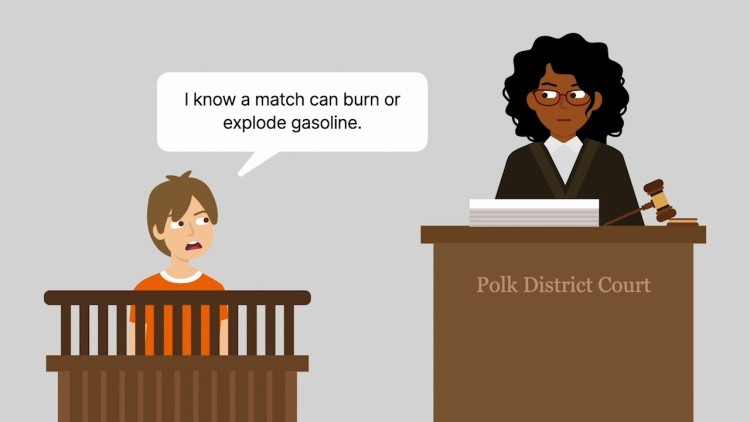Peterson v. Taylor
Iowa Supreme Court
316 N.W.2d 869 (1982)
- Written by Craig Conway, LLM
Facts
Seven-year-old David Peterson (plaintiff) and his younger sister stopped at the home belonging to their neighbors, the Taylors (defendants). The Petersons and Taylors had been friendly—each family inviting the other to their respective homes to visit on occasion. David went to the rear of the Taylor home and learned that nobody was at home. David then decided to build a fire on the Taylors’ concrete slab in their backyard using some twigs and matches. When he was unable to get the fire started, David retrieved a can of gasoline from the Taylors’ storage shed, threw a lighted match in, and watched the fire burn. Thereafter, David obtained another can of gasoline from the shed and poured it over the twigs, accidentally spilling some onto his pants. Subsequently, David’s pants ignited, and he suffered serious burns. David, through his parents (plaintiffs), filed suit against the Taylors for negligence, seeking recovery of damages for medical expenses. At trial, an expert testified that David was of average intelligence but would not realize the full extent of the danger involved in playing with matches and gasoline. However, the expert also testified that David would still know that he would be burned by the fire caused by lighting gasoline. The Taylors argued that David had been contributorily negligent. The jury held for the Taylors. The Petersons appealed.
Rule of Law
Issue
Holding and Reasoning (Allbee, J.)
What to do next…
Here's why 899,000 law students have relied on our case briefs:
- Written by law professors and practitioners, not other law students. 47,000 briefs, keyed to 994 casebooks. Top-notch customer support.
- The right amount of information, includes the facts, issues, rule of law, holding and reasoning, and any concurrences and dissents.
- Access in your classes, works on your mobile and tablet. Massive library of related video lessons and high quality multiple-choice questions.
- Easy to use, uniform format for every case brief. Written in plain English, not in legalese. Our briefs summarize and simplify; they don’t just repeat the court’s language.






